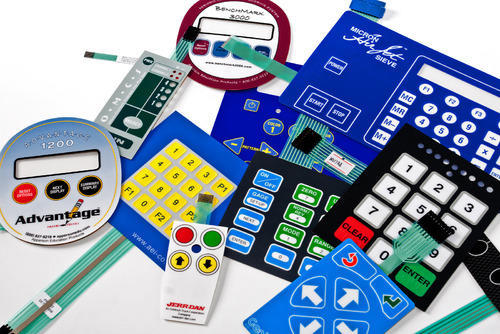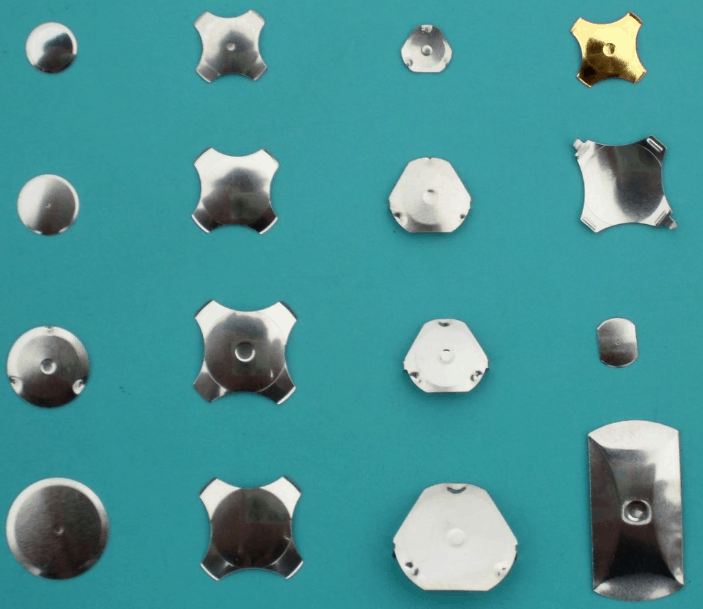
Incredible Membrane Keypad History you have ever acknowledged
Membrane Keypads were ridiculed as a low cost but unreliable input devices when they were invented 30 years ago. After decades of improvements, membrane switches are now established as effective input and keyboarding hardware for several different technical applications. Today, because of their unquestionable advantages, these switches have become high-tech subsystems irreplaceable to several industries.
Membrane Keypads became reliable and commonly used on a number of electronic devices. Initially, printed membranes were used simply as means of decoration to enhance the look of conventional switches or to hide short-stroke keys.
The first real membrane switch came into use in 1980s and the material used was polycarbonate. However, they were dismissed because it is a fact that polycarbonate is brittle, resulting cracks in the keys. They were conceptualized on resistive technology and reverted to pressure. The switch contains two conductive layers separated by a spacer. When pressed, the spacer compresses and voltage flows between the 2 layers.
Initially, membrane switches lacked any tactile feedback. It was impossible then to calculate exact distances between layers; therefore, the switching behavior was comparatively poor.
Evolution of Membrane Keypads
Engineers switched to using polyester as base material. Further, they altered the membrane switch design in reference to composition and structure. Such developments eliminated the issues which posed as hurdles in beginning. Then within the late 1980s, the primary membrane switches with domed keys were made. The introduction of metal domes improved tactile feedback and longevity.

Metal domes empowered membrane switches the most needed tactile feedback.
Another major step which was significant in evolution of membrane switches was the inclusion of LEDs. At first, LEDs were used as backlight keys. Today, they enhance the entire Membrane Keypads into an interesting and effective display option for membrane switches. The most important breakthrough, however, was the rise in switching cycles to over a million operations when gold-plated metal snap domes came in.
Many manufactures simply lay metal domes and put a graphics rich foil on top of them. This will compromise quality because the domes can move. The switch will fail if a key fails to make contact. The domes need to be aligned directly over the printed silver contacts. Once aligned, they get glued with clear placement foil over the domes. The graphic rich foil layer gets affixed over the placement layer to eliminate the problem of the domes moving. This process adds an additional layer of protection and contributes to the sturdiness of the switches.
Modernization of Hi-tech Membrane Keypads
Over the years, membrane switches have also become easier to feature designs. The rear of the keyboard is often fitted on to a custom PCB. Directly mounting them like this on a PCB makes for far more compact designs. Touchscreen, display, analog potentiometer, mouse pad — all of those elements are often added quite easily. LED and electroluminescent (EL) films can illuminate single keys or full areas for visual feedback, as to be used in dark room, or simply as design elements to improve aesthetics. The customization and planning possibilities are virtually unlimited. Don’t miss out the exclusive range when you partner with Linepro Controls as we have contributed to all the industry verticals over the past 30 years.
Capacitive Touch Keypads
A newer capacitive approach uses two isolated conductive electrodes generating an electrical field behind a glass surface. Touching the glass with a conductive object, usually a finger, alters the voltage within the field. This alteration is detected and signals the switch to open or close. Such an approach can now be used with membrane switches or in an input device for smartphones. They feature a glass surface that resists dirt, acid and other chemicals.

At Linepro Controls, capacitive touch switches are static, so there’s no mechanical wear and tear on the contacts. Cleaning is easy and ensures maximum hygiene standards are met. These switches, which make flat designs possible, are often inserted behind glass, plastic, or other non-conductive surfaces. They also give membrane switches a latest technology look.
Dealing with Small Spaces
A challenge with membrane switch is that any tiny air gaps in them can let in dust, humidity, and harsh chemicals, so attention must be paid to the planning of the display, filter discs, and therefore the capacitive switch. Mounting membrane switches on curved surfaces is additionally a challenge. Fortunately, however, these challenges are often overcome with state-of-the-art equipment and engineering.
Product developers should know that input devices have many design options which will make their products stand out. These include illuminated keypads and buttons, built-in touchscreens, raised (domed) keys and capacitive touch.
Good tactile switching behavior is another extremely important factor for user acceptance. This suggests designers should choose membrane switches that are completely sealed and liquid spill proof with cleaning materials, including fluids. Finally, installation of switches should be easy and capable to use a varied range of connectivity or interfacing options such as I2C, SPI, UART, MODBUS, USB, etc.

